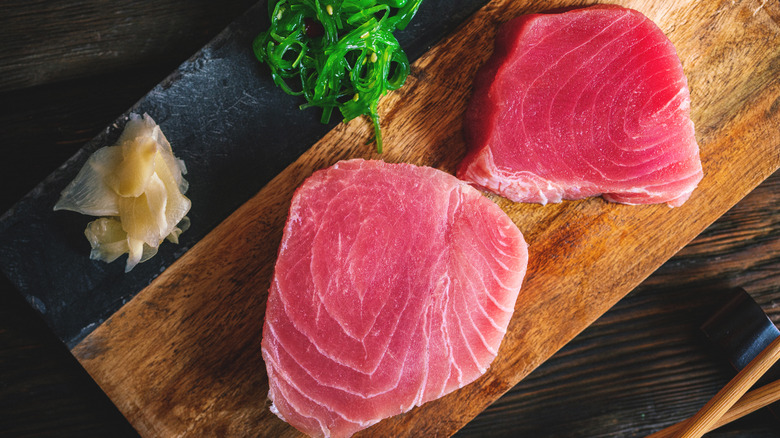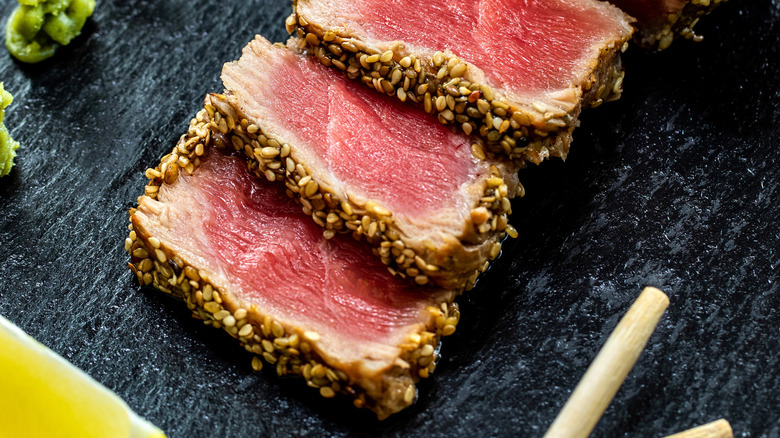Should Ahi Tuna Be Cooked?
Tuna is a bit of an odd duck when it comes to fish. Typically, you have relatively cheap fish (like flaky white cod or shiny silver mackerel) or expensive fish (like the rich, meatlike swordfish or the delicate and tender halibut). Tuna, though, straddles the line: Depending on which tuna species you're talking about, you could be dealing with some of the cheapest or most expensive fish on the planet. While skipjack and albacore often come canned in the little disks we're all familiar with, bluefin and ahi are some of the most expensive varieties you can find.
But while no one would dare to cook bluefin — it's well-known as the premier sushi fish and the priciest fish in the world, as well as recently rising in price by 10,000% – the same can't be said of ahi. Ahi is commonly cooked — but should it be? The answer is yes, kind of. You should cook ahi only a little.
Ahi tuna is best when it's only slightly cooked
Look, well-done steak is a divisive subject. The people who oppose it say it ruins a perfectly good piece of beef and might actually have adverse health effects, while those in favor generally counter with the (honestly fair) answer that's how they like it, and who are you to question how they like their dinner? Maybe well-done steak doesn't have a texture that quite feels or tastes the same as medium rare, but it's still recognizably steak.
But while a well-done sirloin steak still tastes like beef (even if you think it's overdone beef), if you cook ahi to the point where it's fully done, you've essentially paid premium prices for what amounts to canned tuna. You can't buy a can of steak that costs under two dollars, but you can with tuna. Why wouldn't you just buy the cheap stuff if that's what you're after? There's a reason every celebrity chef's recipe for ahi keeps it away from being cooked well done.
That said, you can cook ahi — but not too much. Ahi, it turns out, is the perfect fish for tuna steak.
Lightly seared ahi can be used in any number of ways
If you've ever experienced the joy of a perfectly seared rare ahi tuna steak, you know why that's the absolutely ideal preparation. The key is only to cook the edges while leaving the fish's interior rare, which doesn't take long. You can season it with flavorful marinades (sesame, soy, and ginger are all great flavors for ahi) or create interesting crusts (something based around sesame seeds is a common choice). Ahi has a lovely flavor that can stand independently with just simple salt and pepper.
From there, you can do what you'd like with it. You can serve the steaks whole or slice them into thin pieces (this is how seared ahi is most commonly served at restaurants). From there, they work in sandwiches, tacos, salads, and even totally on their own. Ahi is extraordinarily versatile — as long as you don't overcook it and turn it into a weird fish puck.


